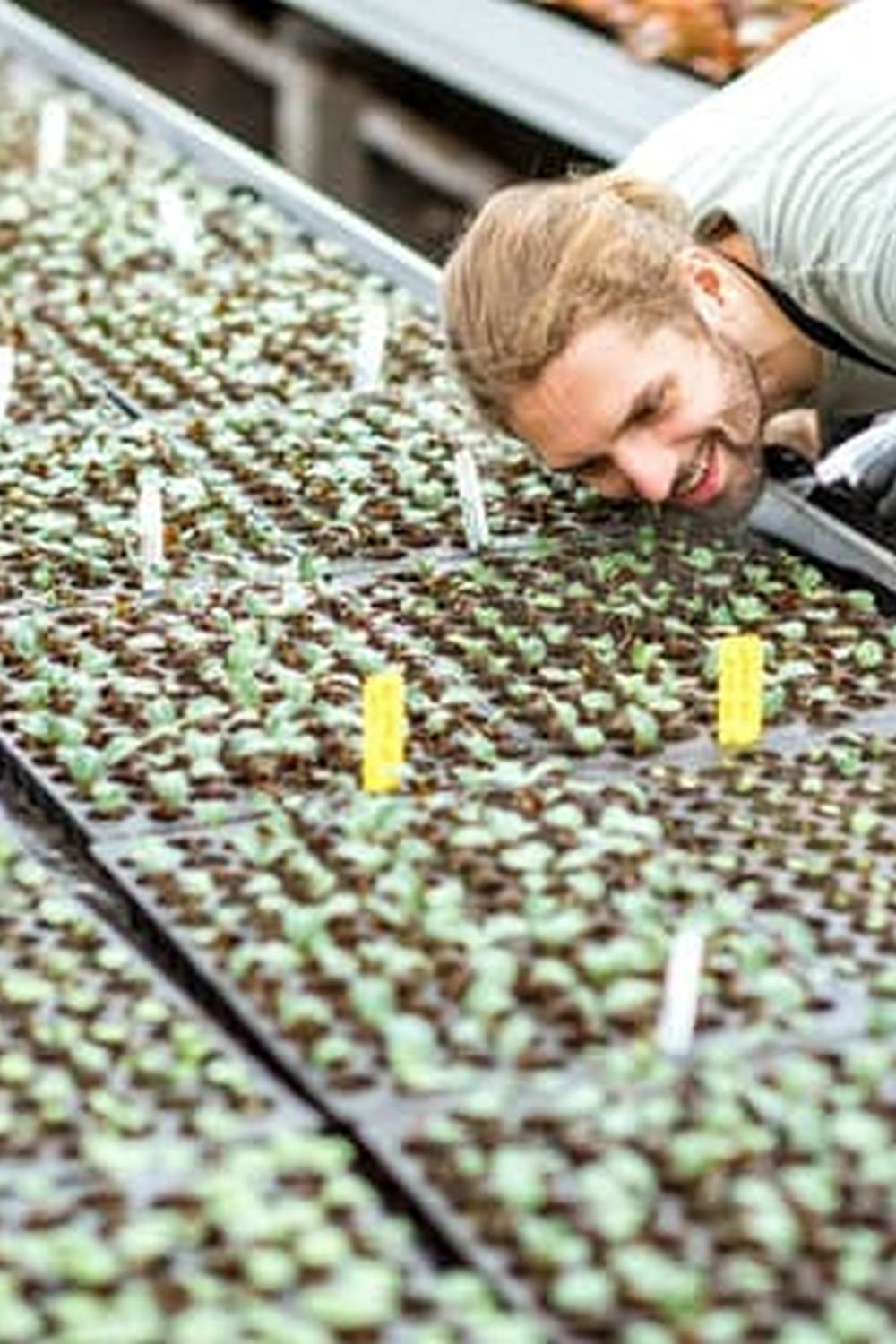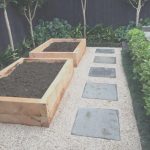Pressure treated wood has been a popular choice for gardeners when it comes to constructing raised beds and other structures for vegetable gardens. However, the question of whether pressure treated wood is safe for vegetable gardens in the UK is a highly debated topic. Understanding the facts and considerations surrounding this issue is crucial for making informed decisions about the materials used in your garden.
Pressure treated wood is created by injecting chemical preservatives into the wood under high pressure to protect it from rot, decay, and insect damage. While this treatment prolongs the lifespan of the wood, there are concerns about the potential risks associated with using pressure treated wood in close contact with edible plants in vegetable gardens.
In the UK, safety regulations govern the use of pressure treated wood, specifically detailing which chemicals can be used and in what quantities. However, despite these regulations, some gardeners still have reservations about using pressure treated wood in their vegetable gardens due to worries about chemical leaching into the soil and potentially contaminating their crops.
What Is Pressure Treated Wood and How Is It Made?
Pressure treated wood is a popular choice for outdoor projects, including garden beds, due to its resistance to decay and pests. But what exactly is pressure treated wood and how is it made?
What Is Pressure Treated Wood?
Pressure treated wood is essentially regular lumber that has been infused with preservatives to protect it from rotting, decay, and insect damage. This process involves placing the lumber in a pressure chamber along with the preservative solution, which is then forced into the wood under high pressure. This helps to ensure that the preservatives penetrate deep into the wood fibers, making it highly resistant to deterioration over time.
How Is Pressure Treated Wood Made?
The chemicals used in pressure treated wood can vary but often include copper compounds such as alkaline copper quaternary (ACQ) or copper azole. These chemicals are effective at protecting the wood against pests and decay. Once the preservative solution has been forced into the wood, it is then left to dry before being sold for use in various outdoor applications, including vegetable gardens.
Overall, pressure treated wood can be a sturdy and long-lasting option for garden beds, but it is essential to consider safety concerns when using it in areas where you plan to grow edible plants such as vegetables.
The Concerns Surrounding Pressure Treated Wood in Vegetable Gardens
Pressure treated wood has long been used in various outdoor construction projects, including garden beds for vegetable gardens. However, there are concerns surrounding the use of pressure treated wood in vegetable gardens, especially when it comes to the potential risk of chemical leaching into the soil and ultimately your food.
Chemical Preservatives in Pressure Treated Wood
The main concern with pressure treated wood is the presence of chemical preservatives such as chromated copper arsenate (CCA), which was commonly used in older pressure treated wood. These chemicals are known to be toxic and can potentially leach into the soil, contaminating your vegetables. While CCA is no longer used in residential applications, other chemical treatments like alkaline copper quaternary (ACQ) or copper azole are still utilized.
Potential Health Risks
Exposure to these chemicals from pressure treated wood can pose health risks when consumed through vegetables grown in contaminated soil. Arsenic, a component of some pressure-treated woods, is a known human carcinogen and can also cause other health issues when ingested over time. Therefore, it is crucial to consider these potential hazards before using pressure treated wood in your vegetable garden.
Impact on Soil Microorganisms
In addition to human health concerns, the chemicals present in pressure treated wood can also have detrimental effects on soil microorganisms that play a crucial role in nutrient cycling and plant growth. Using pressure treated wood may disrupt the delicate balance of organisms within the soil, affecting the overall health and productivity of your vegetable garden.
The Safety Regulations for Pressure Treated Wood Use in the UK
Pressure treated wood is a common material used in gardening, including vegetable gardens, due to its durability and resistance to rot and insects. However, there are concerns about the safety of using pressure treated wood in vegetable gardens, particularly in the UK where regulations are in place to protect human health and the environment.
In the UK, pressure treated wood is usually treated with chemicals such as Chromated Copper Arsenate (CCA) or Tanalith E (ACQ). These chemicals help protect the wood from decay and pests but can potentially leach into the soil over time. This raises questions about whether it is safe for growing edible plants, such as vegetables, in close proximity to pressure treated wood.
| Regulation | Description |
|---|---|
| HSE Guidelines | The HSE provides guidelines on proper handling and disposal of pressure treated wood to prevent exposure to harmful chemicals. |
| Protective Equipment | Wearing gloves and a mask when working with pressure treated wood can help reduce direct contact with potentially hazardous substances. |
| Vegetable Garden Distance | Placing a barrier between pressure treated wood and vegetable garden beds can help minimize any leaching of chemicals into the soil. |
Potential Risks of Using Pressure Treated Wood in Vegetable Gardens
Pressure treated wood is commonly used in gardening, including for building vegetable garden beds. However, there are some concerns about its safety, particularly when it comes to growing vegetables. One of the main worries is the potential leaching of harmful chemicals from the treated wood into the soil and eventually into the plants themselves.
Here are some potential risks of using pressure treated wood in vegetable gardens:
1. Chemical Exposure: The chemicals used to treat pressure treated wood, such as arsenic, chromium, and copper, can potentially leach into the soil over time. This can result in these harmful substances being absorbed by the vegetables grown in these beds.
2. Health Concerns: Due to the risk of chemical exposure, there are potential health concerns for individuals consuming vegetables grown in beds made from pressure treated wood. These chemicals can be hazardous if ingested regularly or in high amounts.
3. Environmental Impact: Beyond personal health concerns, there is also an environmental impact to consider when using pressure treated wood in vegetable gardens. Leaching chemicals can harm beneficial organisms in the soil and nearby water sources, affecting the overall ecosystem.
Considering these risks, it is essential for gardeners to weigh the pros and cons carefully before deciding to use pressure treated wood in their vegetable gardens. There are alternative materials available that can be safer for growing food, ensuring a healthy and sustainable gardening practice.
Alternatives to Pressure Treated Wood for Vegetable Garden Beds
Pressure treated wood has been a popular choice for building garden beds due to its durability and resistance to rot and pests. However, the question of whether pressure treated wood is safe for vegetable gardens in the UK is a significant concern among gardeners. The process of treating wood with chemicals to increase its longevity raises worries about potential health risks when used in close proximity to edible plants.
In the UK, pressure treated wood for gardening purposes is subject to safety regulations set by the European Union Biocidal Products Regulation (EU BPR). This regulation aims to ensure that any chemicals used in pressure treated wood are not harmful to human health or the environment. While these regulations help mitigate some risks, many people still have reservations about using pressure treated wood in vegetable gardens, especially considering the proximity of potentially toxic substances to food crops.
For those looking for alternatives to pressure treated wood for their vegetable garden beds, there are several options available. One popular choice is untreated natural wood, such as cedar or redwood, which are naturally resistant to decay and insects.
Another alternative is composite lumber made from recycled materials, which offers the durability of traditional pressure treated wood without the use of harmful chemicals. Additionally, using stone, concrete blocks, or bricks can create long-lasting and attractive raised beds without any concerns about chemical leaching.
| Pressure Treated Wood Alternatives | Description |
|---|---|
| Untreated natural wood (cedar or redwood) | Naturally resistant to decay and insects |
| Composite lumber | Made from recycled materials, durable without harmful chemicals |
| Stone, concrete blocks, bricks | Create long-lasting raised beds without chemical concerns |
Tips for Safely Using Pressure Treated Wood in Vegetable Gardens
Pressure treated wood, commonly used in gardening and construction, is a popular choice for vegetable garden beds due to its durability and resistance to decay. However, there are concerns about the safety of using pressure treated wood in vegetable gardens, particularly in the UK where regulations are strict when it comes to chemicals that may leach into the soil and potentially contaminate crops. Here are some tips for safely using pressure treated wood in your vegetable garden:
1. Seal the Wood: One way to minimize any potential risks associated with pressure treated wood is to seal it with a non-toxic sealant or paint. This can help create a barrier between the wood and the soil, reducing the chances of chemicals leaching into your garden bed.
2. Line the Bed: Another option is to line the inside of your pressure treated wood vegetable garden bed with a thick plastic sheeting or pond liner. This can act as an additional barrier between the wood and soil, providing extra protection for your vegetables.
3. Rotate Crops: To further reduce any potential risks of using pressure treated wood in your vegetable garden, consider rotating your crops each season. This practice can help prevent a buildup of any chemicals that may have leached from the wood into the soil.
By following these tips, you can enjoy the benefits of using pressure treated wood for your vegetable garden beds while also taking necessary precautions to ensure that your crops remain safe for consumption. Remember to always do thorough research and consider all factors before deciding on what materials to use in your garden.
Conclusion
In conclusion, when it comes to using pressure treated wood in vegetable gardens in the UK, it is essential to consider the potential risks and safety regulations associated with its use. While pressure treated wood has been a popular choice for garden beds due to its durability and resistance to decay, there are concerns about the chemicals used in the treatment process leaching into the soil and potentially harming edible plants.
It is important for gardeners to be aware of the safety regulations in place regarding the use of pressure treated wood in vegetable gardens. In the UK, certain types of pressure treated wood that contain harmful chemicals such as arsenic are no longer permitted for use in areas where food is grown. This regulation aims to protect consumers from exposure to toxic substances and ensure the safety of homegrown produce.
When deciding whether to use pressure treated wood for your vegetable garden bed, it is crucial to weigh the potential risks against the benefits. Consider alternative materials such as untreated cedar or composite lumber that are safer options for growing edible plants. By making an informed decision and following safety guidelines, you can create a healthy and thriving vegetable garden without compromising on safety.
Frequently Asked Questions
Can I Use Pressure Treated Wood for Vegetable Garden?
Using pressure treated wood for a vegetable garden is not recommended. The chemicals used to treat the wood can leach into the soil, potentially harming your plants and contaminating your vegetables.
Can You Use Treated Lumber for Tomato Stakes?
Treated lumber may not be the best choice for tomato stakes. The chemicals in the treated wood could possibly transfer to the plants, affecting their growth and even the fruits they produce.
When Did They Stop Using Arsenic in Pressure Treated Wood?
Arsenic was phased out of pressure treated wood in the early 2000s due to health concerns associated with exposure to this toxic substance. Manufacturers now use alternative treatments that are considered safer for both humans and the environment.

If you’re looking to get into vegetable gardening, or are just looking for some tips on how to make your current garden better, then you’ve come to the right place! My name is Ethel and I have been gardening for years. In this blog, I’m going to share with you some of my best tips on how to create a successful vegetable garden.





